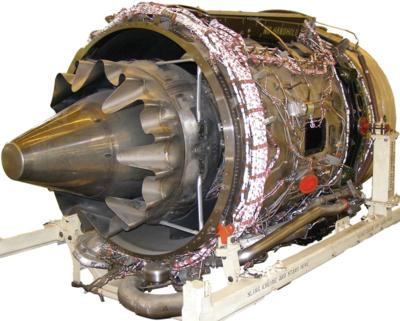Sun, Jul 11, 2021
AD 2021-12-07 Requires Removing Affected HPT Disks From Service Prior To Reaching Specified Compliance Times
The FAA is adopting a new airworthiness directive (AD) for certain Rolls-Royce Deutschland Ltd & Co KG (RRD) BR700-710A1-10, BR700-710A2-20 and BR700-710C4-11 model turbofan engines.

This AD was prompted by an investigation by RRD, which revealed a quality escape during the high-pressure turbine (HPT) stage 1 disk rim cooling air hole manufacturing process. This AD requires removing affected HPT disks from service prior to reaching specified compliance times or at the next engine shop visit, whichever occurs first. The FAA is issuing this AD to address the unsafe condition on these products. This AD is effective August 12, 2021.
Supplementary Information: The FAA issued a notice of proposed rulemaking (NPRM) to amend 14 CFR part 39 by adding an AD that would apply to certain RRD BR700-710A1-10, BR700-710A2-20 and BR700-710C4-11 model turbofan engines. The NPRM published in the Federal Register on January 21, 2021 (86 FR 6271). The NPRM was prompted by an investigation by RRD, which revealed a quality escape during the HPT stage 1 disk rim cooling air hole manufacturing process. In the NPRM, the FAA proposed to require removing affected HPT disks from service prior to reaching specified compliance times or at the next engine shop visit, whichever occurs first. The FAA is issuing this AD to address the unsafe condition on these products.
The European Union Aviation Safety Agency (EASA), which is the Technical Agent for the Member States of the European Community, has issued EASA AD 2019-0299, dated December 10, 2019 (referred to after this as “the MCAI”), to address the unsafe condition on these products.
The MCAI states:
- An occurrence was reported of an HPT stage 1 disc burst on an industrial gas turbine engine. Subsequent investigation revealed a quality escape during HPT stage 1 disc rim cooling air hole manufacturing process. A review revealed that 28 HPT stage 1 discs were subject to a similar quality escape, two of which have been recovered and removed from service. The consequence of this manufacturing error is that the affected parts can no longer safely reach their Declared Safe Cyclic Life (DSCL).
- This condition, if not corrected, may lead to failure of an affected part, possibly resulting in release of high-energy debris, with consequent damage to, and/or reduced control of, the aeroplane. To address this potentially unsafe condition, RRD issued the NMSB, providing instructions to remove the engine from service for in-shop replacement of the affected part.
- For the reasons described above, this [EASA] AD reduces the DSCL for the affected parts, requires identification of the affected parts and removal from service of each affected engine for replacement of the affected part. This [EASA] AD also prohibits (re)installation of affected parts.
You may obtain further information by examining the MCAI in the AD docket at https://www.regulations.gov by searching for and locating Docket No. FAA-2020-1174.
More News
“We are disappointed with today’s verdict and respectfully disagree with the outcome. From the outset, we have maintained that Gogo’s independently developed 5G t>[...]
Takeoff Hold Lights (THL) The THL system is composed of in-pavement lighting in a double, longitudinal row of lights aligned either side of the runway centerline. The lights are fo>[...]
Aero Linx: The 1-26 Association (Schweizer) The Association’s goal is to foster the helpfulness, the camaraderie, and the opportunity for head-to-head competition that is fou>[...]
Also: Elfin 20 Journey, BASE Jumper Rescue, Pipistrel Makes Waves, EAA Hall of Fame, Affordable Flying Expo 2026 Like most of the industry, kit manufacturer Sonex has been hit by t>[...]
Aero Linx: The de Havilland Moth Club Ltd The de Havilland Moth Club evolved from a belief that an association of owners and operators of Moth aeroplanes should be formed to create>[...]
 Aero-News: Quote of the Day (11.26.25)
Aero-News: Quote of the Day (11.26.25) ANN's Daily Aero-Term (11.26.25): Takeoff Hold Lights (THL)
ANN's Daily Aero-Term (11.26.25): Takeoff Hold Lights (THL) ANN's Daily Aero-Linx (11.26.25)
ANN's Daily Aero-Linx (11.26.25) Airborne Affordable Flyers 11.20.25: Sonex $$$, SnF 26 MOSAIC DAY, P. Ponk STCs
Airborne Affordable Flyers 11.20.25: Sonex $$$, SnF 26 MOSAIC DAY, P. Ponk STCs ANN's Daily Aero-Linx (11.27.25)
ANN's Daily Aero-Linx (11.27.25)



